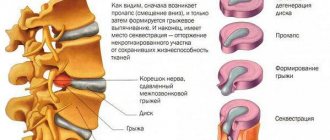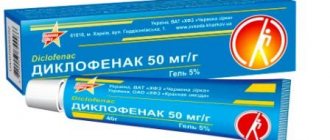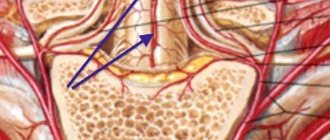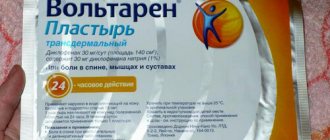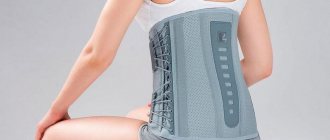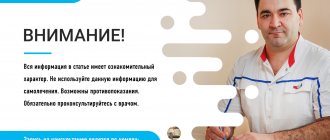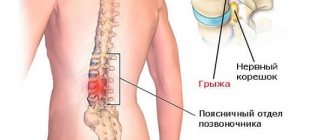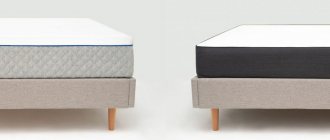In the last decade of the 19th century, French physicist Arsene d'Arsonval made a discovery. If a high-frequency current is passed through living tissue without raising it to an irritating level, then it can produce interesting physiological effects, depending on the other parameters of this current.
Arsene d'Arsonval
As a result, a type of electrotherapy was created, which was named after the name of its author, and became very widespread in all countries in the twentieth century, and in Russia it is still used. Darsonvalization is successfully used in physiotherapy departments for the treatment of varicose veins, hemorrhoids, as well as for some neurological diseases.
How indicated is the use of Darsonval for spinal hernias, or for protrusions and herniations of intervertebral discs? For example, will the use of darsonvalization be effective for a herniated lumbar spine? But before we talk in detail about this method of treating hernias, it is necessary to explain the physical principle of darsonvalization.
What is darsonvalization?
Darsonvalization is based on the effect on biological tissue of alternating current, which has a high frequency, 110 thousand hertz, or 110 kHz. Let us remind you that in a regular household outlet the frequency of alternating current is 50 Hz. The voltage during darsonvalization is much higher than in a household network and can be 25 kilovolts (kV), which is about 100 times more than the usual 220 V.
But in order to ensure that such a large potential difference at the ends of the conductor does not lead to electrical injury, an extremely low current strength is taken, which does not exceed 0.02 milliamperes (mA). AC pulses are delivered in short bursts, and when scanned on an oscilloscope they are bell-shaped, with a gentle rise and fall.
Direction of currents.
What happens during the procedure? On one side there is the electrode of the device, and on the other side there is the patient’s skin, and a discharge occurs between the electrode and the skin. It may be invisible and not cause any sensations at all. When the characteristics of the discharge change, it can jump in the form of a spark, generate minor heat, and even produce a local and shallow cauterizing effect.
Such modulation is possible when the voltage on the electrode increases, when the distance to the skin changes, and also when the electrode area changes. During the occurrence of a pulse, atmospheric oxygen is converted into ozone, and free nitrogen, combining with the active form of oxygen, forms nitrogen oxides.
The thermal effect from darsonvalization is small, since the current strength is insignificant, and its effect on the body is not constant, but pulsed. Perhaps, only when using a rectal or vaginal electrode can the patient experience heat, since darsonvalization is performed as an abdominal procedure.
General rules for using darsonval
To get started you need:
- select the electrode/nozzle and install it into the holder until it stops (as a rule, you need to apply light force);
- check that the intensity control is disabled (in the OFF position);
- connect the device and set the required operating power;
- carry out a “contact” or non-contact procedure;
- disconnect the device from the power supply, clean the glass surface (for this we use a slightly damp cloth);
- dry and fold.
The nozzle may not glide well on the surface. To correct this, sprinkle the skin with powder or talcum powder (as appropriate). Treatment of ulcers or open wounds is carried out through gauze. If additional nutrition of the deep layers of the dermis is necessary, special oxygen gels are used.
How to use darsonval for the face
The instructions for the device contain a step-by-step algorithm of actions. Basic recommendations:
remove decorative cosmetics using special products, and then rinse the skin with warm water and wipe with a towel (if you have acne, peeling or deep cleaning is necessary);
- apply a small amount of talc or oxygen gel;
- act on the surface with a glass nozzle “fungus”;
- complete darsonvalization and apply cream to the skin (make a nourishing mask for 10-25 minutes).
The procedure can be combined with ultrasound massage. Cosmetologists recommend daily electrical exposure to tissue. Duration of 1 session – up to 5 minutes. The duration of the course depends on the desired result:
- 10 sessions – to activate metabolic processes and for nutrition;
- 11-20 – to eliminate problems (acne, oiliness, dermatitis, psoriasis, acne).
Darsonval treatment courses can be repeated every 3-4 months.
Subtleties of sessions to improve skin nutrition
It is necessary to make light forward movements along the so-called “massage lines” on the face. In the neck area, the device slides up and down (the thyroid area should not be touched).
The “silent discharge” technique is used, i.e. contact of the device with the skin. The intensity of the darsonval is average and slightly higher. The technique is effective for:
- skin porosity and the appearance of pimples/blackheads;
- problems with the functioning of the sebaceous glands;
- decreased firmness and elasticity;
- formation of the first wrinkles and creases (“crow’s feet” or between the eyebrows);
- sagging and lifeless appearance of the skin.
For darsonvalization, a special “mushroom” type attachment is required.
Rules for treating problem skin
To carry out the procedure for restoring and healing the dermis, a “Drop” type attachment is used. The impact is exerted on the problem area and a small area next to it (within a radius of 3-5 cm). Sessions are required for:
- pustular rash;
- serious inflammatory processes;
- severe acne.
The formula for darsonval depends on the situation:
- the pustular rash is treated using the “silent discharge” method (the intensity should be medium);
- acne lesions are cauterized with a high-intensity “spark discharge” (there should be a gap of up to 4 mm between the skin and the device).
The first changes are difficult to notice immediately after the procedure. But gradually the skin condition will improve. The key to health is regular use of the drug in accordance with the manufacturer’s recommendations.
Darsonval for hair. Step-by-step instructions for use
Short-term electronic pulses are needed:
- stimulating growth;
- improving the appearance and condition of hair;
- “awakening” hair follicles;
- reducing the risk of alopecia and hair loss;
- combat migraines and headaches.
For the procedure, you need to rinse and dry your hair. Hairstyles, elastic bands, hairpins, and hoops are removed. Before starting the treatment, the hair must be combed.
To treat the scalp, use the “Comb” attachment. The instructions are simple: the user must move the glass electrode along the surface of the head in the direction of hair growth. The “quiet operation” technique is used, i.e. without air gap. The nozzle is carefully moved from the forehead to the back of the head, making progressive massage movements. If your hair is short, you can move the attachment back and forth.
The duration of one session is no more than 15 minutes. After completing the procedure, it is recommended to rub nourishing ingredients (masks, oils, serums) into the scalp. Frequency – daily (before bedtime or in the morning). The duration of 1 course of treatment for scalp diseases and elimination of hair problems is about 20-30 sessions, depending on the characteristics of the patient’s body. After one course, take a break for 2-3 months. If there is a need to restore the health of the scalp, the sessions are repeated. Both men and women can use darsonval.
Darsonval for the body: algorithm for proper use
The duration of the course and the intensity of the device depend on the goal set by the patient. In the instructions for the device you can find detailed instructions on how to use the device.
Rules for the treatment of varicose veins and vasospasm
To eliminate spider veins and minimize the risks of varicose veins, you can use darsonval. To treat problem areas, a special “Fork” attachment is required. Intensity – medium. The technique is “silent contact”.
Instructions for the procedure:
- steam your feet in warm water and wipe with a towel;
- connect the nozzle and start a slow movement (5-10 minutes – treatment from the little toe to the knee, 3-4 minutes – impact on the popliteal fossa, 10 minutes – movement from the knee to the inguinal fold);
- end, turn off and fold the device;
- Apply any cream or gel against varicose veins to the skin.
The duration of 1 session is about 30 minutes. Darsonvalization is recommended to be carried out daily. Course duration is up to 25 procedures. After this, take a break and, if necessary, resume therapy.
Darsonval against cellulite
Treatment is necessary to eliminate the “orange peel” on the thighs. The procedure is carried out at any stage and for any type of cellulite. The instructions are simple:
- take a shower using anti-cellulite scrubs and compounds, wipe the skin;
- take the device and connect the “Mushroom” attachment;
- use the electrode using the contact method on the affected areas (the degree of intensity is determined individually);
- complete the session, apply anti-cellulite cream to the skin.
It is recommended to treat problem areas daily. The duration of each session is from 10 to 30 minutes. The effect of darsonvalization is noticeable after a few days.
Darsonval for the treatment of neuroses and sleep disorders
Before using the device for serious diagnoses, you should consult with your doctor. Instructions for using the device boil down to processing the collar area of the head with electrical impulses.
To carry out darsonvalization, you need a “Mushroom” attachment at low intensity. The method is “silent discharge”, i.e. maximum skin contact. The electrode moves along the direction of hair growth (from the back of the head to the neck and shoulders). The duration of processing is determined individually. At the first sessions, a duration of more than 10 minutes is not recommended. The mode of use of the device is daily or every other day. The duration of one course is up to 16 sessions. After this, you can take a break for 3-4 months. If necessary, the course of treatment is resumed.
Darsonvalization against trophic ulcers
Sessions are carried out while changing the gauze bandage. For darsonvalization you need:
- disinfect the wound (if required) and cover it with a dry gauze cloth;
- install the “Mushroom” attachment and connect it (the “spark charge” technique is used, i.e. there should be no direct contact of the electrode with the skin);
- perform movements along the edge of the wound, as well as treat areas within a radius of 5-7 cm (the intensity of work is average, the duration of exposure is 10 minutes).
The full course is 9-16 sessions (depending on individual characteristics). After using darsonval, apply the drug recommended by the doctor
Darsonval against radiculitis and neuralgia
Regular use of the drug reduces the pain that occurs when:
- neuritis;
- myositis;
- radiculitis;
- neuralgia and other problems.
The instructions for using darsonval are simple. But before starting the session, you should consult a doctor. The device must be applied directly to non-painful areas. Mode – “spark charge”, i.e. There should be a gap of up to 4 mm between the nozzle and the skin. The intensity of the darsonval should be average.
Darsonval is used for therapeutic and prophylactic (therapeutic) purposes. The device is necessary to restore hair growth, improve the condition of the skin, and combat a number of diseases
Therapeutic effect
This spark effect on the skin or mucous membranes reduces pain perception, reduces itching, helps reduce the tone of small arterial vessels, and increase venous tone. As a result of a course of darsonvalization, vascular permeability improves.
As a result, darsonvalization helps improve microcirculation in the affected area. As a result, the therapeutic effect comes down to a significant reduction in inflammation and swelling in superficial tissues. As the voltage increases and the spark discharge intensifies, very small foci of necrosis form on the skin; tissue decay products accumulate in the areas of this necrosis. They are lysed by macrophages of the reticuloendothelial system, as a result of local strengthening of immunity, metabolism and tissue trophism are improved and the ability to regenerate is increased. This is important for diseases such as chronic venous insufficiency or varicose veins.
A side but beneficial effect of darsonvalization can be considered a slight bactericidal and bacteriostatic effect, since ozone kills harmful microorganisms.
Benefits of the procedure
According to doctors, the problem of cervical osteochondrosis is present in almost every third person, which indicates the presence of a pathological modification of the spine.
In especially difficult cases, which are a consequence of the development of the disease to the formation of a severe form, it is assumed that a set of therapeutic measures will be carried out, the duration of which exceeds a month.
In any case, to eliminate the root causes of the disease and existing discomfort, you should not self-medicate. It is important to promptly seek help from your attending physician - a neurologist, who will not only assess the condition of the body, but also select the most appropriate treatment and prophylactic complex.
The fundamental positive aspect of the darsonvalization procedure is the possibility of its inclusion in the therapeutic system, regardless of the stage of the disease.
This feature is due to the presence of a minimum of contraindications. The use of an active electrical impulse on the affected area promotes complex stimulation and achievement of positive results.
It should be remembered that the use of darsonvalization is advisable only along with the prescription of medications.
Impact on the cervical spine area
During the healing effect of Darsonval on the cervical spine, an effect on the area of vessels with the potential for their expansion is achieved. This eliminates headaches, which in most cases accompany osteochondrosis.
The device also has a positive effect on the vertebral cartilage tissue. The device has a stimulating effect with the normalization of metabolism in the affected tissue area along with the activation of the regeneration process of cartilage tissue.
The effect of the device counteracts the process of proliferation of intervertebral discs, which prevents the appearance of intervertebral hernias.
The procedure should be performed by a medical professional whenever possible.
Types of darsonvalization
Like many other types of physiotherapy, general and local application of this technique is possible. The most common is local, as it allows you to treat various pathological formations with a predictable effect. For this, as mentioned above, a frequency of 110 kilohertz and a voltage of up to 30 kilovolts are used with insignificant alternating current.
General darsonvalization involves increasing the frequency fourfold, which ultimately amounts to 440 kilohertz. There is also a difference in the duration of the pulses. Local darsonvalization consists of pulses of 100 microseconds each, and general darsonvalization uses shorter pulses - up to 30 microseconds.
Indications and contraindications for use
Local darsonvalization is most often used, and the indications for it are primarily:
- various circulatory disorders and microcirculatory functions;
- varicose veins (chronic venous insufficiency) disease and Raynaud's syndrome;
- cardialgia;
- neurogenic bladder and urinary incontinence;
- trophic ulcers;
- difficult-to-heal wounds and burns, frostbite.
This type of electrotherapy is widely used in dentistry for the treatment of periodontal disease and gingivitis, aphthous stomatitis and periodontitis. In dermatology, this technique is used in the complex therapy of psoriasis and itchy dermatoses, eczema and acne, alopecia and seborrhea. Darsonvalization is used on mucous membranes in gynecology and proctology.
To what extent can darsonvalization be used for discogenic complications of osteochondrosis, for protrusions and herniations of intervertebral discs? In neurology, darsonvalization is indicated for various dysfunctions of peripheral nerves. These are neuropathy and neuralgia, autonomic disorder.
Hernia on MRI.
This type of electrotherapy is indicated for lumbago, myositis, and radiculitis. Accordingly, the indications will be osteochondrosis of any part of the spine with various syndromes. These are radicular symptoms, or radiculitis, reflex-tonic muscle syndromes (myofascial) and other conditions associated with complications of osteochondrosis.
It should be pointed out that darsonvalization, like any type of physiotherapy, has a symptomatic effect and reduces, or even eliminates, only the effects of the hernia on soft tissues. The hernia itself remains as a defect of a destroyed intervertebral disc. Over time, it will increase more and more, cause more and more symptoms, and physiotherapy, as well as any other methods of conservative treatment, will become less and less effective.
Therefore, from this point of view, darsonvalization is no different from the use of painkillers. The pain is eliminated, but the mechanism that led to the onset of the pain syndrome remains, and the cause of the pain itself also does not disappear.
What are the contraindications to any type of general or local darsonvalization? This:
- childhood;
- low blood pressure or sick sinus syndrome, manifested by persistent bradycardia;
- insufficient blood clotting, bleeding gums, tendency to nosebleeds, hemorrhagic syndrome;
- skin hypersensitivity associated with current intolerance.
These are also general contraindications to physiotherapeutic procedures. These include cancer, fever, acute infection, some mental disorders, epilepsy and other conditions and illnesses.
Low voltage currents
The use of constant continuous electric (galvanic) current of low voltage (30-80 V) and low power (up to 50 mA), supplied to the patient’s body through contact electrodes, is called galvanization .
Due to the capacitive properties of tissues, during galvanization, electrical polarization occurs in them - the accumulation of oppositely charged ions near the membranes with the formation of an electromotive force in the direction opposite to the applied voltage. Polarization is most pronounced in the skin, but it can also occur in deep tissues located in the path of the current. Polarization affects the dispersion of cytoplasmic colloids, cell hydration and the permeability of cell membranes. It fades within several hours, which is associated with a long aftereffect of direct current. Under the influence of direct current, the phagocytic activity of leukocytes increases, the activity of humoral factors of nonspecific immunity increases, and the production of antibodies increases.
In sanatorium-resort conditions, galvanization is much more widely used in the form of galvanic mud therapy and electrophoresis of medicinal substances and rarely as an independent therapeutic method.
The domestic industry produces the portable device “Potok-1”, which is accompanied by a set of gynecological electrodes in the form of pressed carbon rods. In the absence of a graphite electrode, V. M. Strugatsky recommends using a wooden one, proposed by G. A. Kellat, which is easily made from low-resin wood species: aspen, ash, beech, etc. Such an electrode is a cylinder with a diameter of 2 cm, a length of 10-12 cm A metal rod is tightly inserted into it, partially enclosed in an insulating rubber tube. Metal electrodes for vaginal procedures are unacceptable due to the possibility of burning the vaginal mucosa. Hydrogalvanic four-chamber baths are a special type of general galvanization.
Galvanization procedures are dosed according to current density and duration of exposure. The maximum permissible current density during galvanization is considered to be 0.1 mA/cm2. With general and segmental-reflex effects it is usually less than 0.01 mA/cm2) than with local ones (0.05-0.1 mA/cm2). In addition, the size of the electrode must be taken into account. The larger the electrode, the lower the current density.
Diadynamic (DD) currents
The essence of the method is to influence the patient’s body with two constant pulses of a half-sinusoidal shape with a frequency of 100 Hz and currents conducted separately or in continuous alternation.
The direct effect of diadynamic current on body tissue differs little from the influence of galvanic current. There is significant variation in the response to the body as a whole. Along with the reactions characteristic of a constant, even current when exposed to DD current, faster changes in the concentration of ions near the cell membrane caused by pulses lead to an equally rapid change in the dispersion of proteins in the cytoplasm of cells and to a qualitatively new functional state of the cell and tissue in comparison with reactions to slow changes.
With rapid changes in ion concentration, if they occur in a muscle cell or in its nerve, a contraction of the muscle fiber occurs, which is accompanied by a reflex increase in blood flow to the excited fibers and to any other working organ. This factor helps to increase blood circulation not only in the tissues located in the interelectrode space, but also in parts of the body.
Apply a full-wave current for 2 minutes, then a short-period modulated current for 3 minutes. The placement of the electrodes is the same as for amplipulse therapy. Then the polarity of the current is reversed and the effect is repeated. Current strength until painless vibration appears under the electrodes.
Sinusoidal modulated currents
The essence of the method is to expose the body to an alternating sinusoidal current with a frequency of 5000 Hz, the amplitude of which varies according to the law of a low-frequency signal, or an alternating sinusoidal current with a frequency of 2000 Hz, modulated by a frequency of 50 Hz. When treating SMT, a series of oscillations of amplitude pulsation act like individual current pulses, which is why the second name of this method is amplipulse therapy.
SMT can freely pass through the skin, which contributes to the absence of unpleasant burning and tingling sensations, as with DD therapy.
Under the influence of SMT, pathologically altered blood circulation in the brain and spinal cord, heart and other internal organs, including the pelvic organs, improves. The significantly reduced glucocorticoid function of the adrenal glands increases as a result of prolonged physical inactivity.
In case of deep metabolic disorders in patients with exogenous-constitutional obesity, the effect of SMT on the muscles of the anterior abdominal wall of the abdomen leads to a significant reduction in excess body weight due to its fat component, SMT also has an analgesic property, in chronic inflammatory processes of the genitals, complicated by tubal infertility. The therapeutic effect of SMT is realized by improving the functional state of the autonomic nervous system, in particular its subcortical centers, which leads to an increase in the adaptive-trophic function of the sympathetic nervous system, improvement of ovarian function, blood circulation of the pelvic organs, restoration of the functional activity of the neuromuscular elements of the fallopian tubes, elimination of clinical manifestations of the disease.
The devices “Amplipulse-3”, “Amilipulse-ZT”, “Amplipulse-4” are used.
Indications . Chronic inflammatory processes of the genitals, functional tubal infertility, vegetoganglioneuritis of the pelvic organs, menstrual irregularities, exogenous constitutional obesity, functional stress urinary incontinence.
One electrode is placed on the lumbosacral region, the other is placed on the lower abdomen. Operating mode first, PP 3rd and 4th, modulation depth 80-100%, modulation frequency 35-50, current 15-20 mA. Duration of exposure 15 minutes. Daily. The course of treatment is 10-12 procedures.
Fluctuarization
This is the effect of a sinusoidal alternating current of low strength and low voltage, randomly varying in amplitude, and in particular 100 Hz - 10 kHz. Treatment with fluctuating current improves the functional state of the myometrium, ovaries, cortex and medulla of the adrenal glands. When exposed to the head, fluctuation relieves asthenoneurotic reactions: headache, increased irritability. When exposed to a hot focus, it helps to limit the spread of the process and its reverse development if the area of the focus is small.
In the mechanism of the anti-inflammatory effect of fluctuarization, the vascular reaction is of great importance. The short-term hyperemia caused activates tissue trophism, phagocytosis, enzymatic activity and the processes of resorption of toxic substances of tissue decay from foci of inflammation. Fluctuarization has less stress on a woman’s body than DD therapy and SMT.
When applied vaginally to the bladder area, the vaginal electrode and its location are the same as during treatment with DD currents, the mode is straightened; The cathode is the vaginal electrode, the anode is the electrode pad (10 by 14 cm) placed in the suprapubic area. The current strength is set until the patient experiences pronounced but painless vibration under the anode.
In the transverse method of exposure, bipolar symmetrical or asymmetrical fluctuating currents are used.
Duration of the procedure is 30 minutes. Conducted daily. The course of treatment is 15 procedures.
Indications and contraindications are the same as for DD therapy and amplipulse therapy.
Interfering currents
The essence of the method is the effect on the body of low-frequency pulses generated due to the interference of two high-frequency currents supplied using independent pairs of electrodes from two different generators. When treated with interfering currents, a significant fibrolytic effect of interfering therapy in gynecological diseases has been established. The leading role in the mechanism of action of interfering currents belongs to improving the functional state of peripheral circulation. In addition, minor impulses act directly on internal organs located in the interelectrode space.
The analgesic effect of interference currents, compared to diadynamic and other low-frequency currents, is less pronounced. Their fibrolytic effect is especially evident in chronic inflammatory diseases of the uterine appendages. In acute and subacute cases, they are little or completely ineffective.
The procedures are carried out using the transverse method, the current strength is up to a distinct vibration in the area of influence under the electrodes, the duration of exposure is 15-20 minutes. 10-12 procedures daily.
Indications. Chronic inflammatory diseases of the genitals.
Contraindications are general for low voltage currents.
Electroson
A method of neurotropic non-pharmacological influence on the central nervous system of pulsed currents (frequency 5-150 Hz) in doses that promote the development of conditions similar in clinical manifestations to rest, drowsiness or sleep, but differing from them in therapeutic effect. There are two main directions in the action of electrosleep: anti-stress, sedative, tranquilizing (phase I of electrosleep) and stimulating, relieving mental and physical fatigue, increasing overall vitality (phase II).
Devices "Electroson-2", "Electroson-4T" and "Electroson-3" for simultaneous exposure to four patients.
The electrodes, with pads moistened with warm tap water placed in their sockets, are placed on the eyes with the eyelids closed and connected to the cathode, and the electrodes installed on the mastoid processes are connected to the anode. The pulse frequency is 10-20 or 60-100 Hz from 20-30 minutes to 1 hour, after which the current is turned off and, if the patient is sleeping, then left for 1.5 hours. Procedures are carried out daily or every other day. The course of treatment is 12-20 procedures.
Electrosleep is indicated for gynecological patients with severe neuroses, in particular neurasthenia (hypersthenic and psychasthenic syndromes), as well as for menopausal and post-castration syndrome with symptoms of psycho-emotional disorders.
Contraindications. Current intolerance, inflammatory eye diseases, eczema and dermatitis on the skin, hypertension.
Central electroanalgesia
The essence of the method is to use a wider range of frequencies than with electrosleep, which makes it possible to exert a regulatory influence on the activity of the functional systems of the woman’s body that ensure homeostasis, and to obtain an electro-tranquilizing effect. The Lenar device is used.
A bifurcated cathode is placed at the border of the middle and lateral thirds of the forehead, a bifurcated anode is placed on the neck area under the left and right mastoid processes. Electrode gauze pads (size 14 by 4 cm) are moistened with saline solution. Pulse frequency from 250 to 800 Hz, pulse duration 0.15-0.2 ms, current from 0.3 to 0.8 mA. The duration of the procedure is 30-60 minutes, carried out daily or every other day. The course of treatment is 8-10 procedures.
Electrical stimulation
The essence of the method is the use of low-frequency monopolar pulses of rectangular, triangular and exponential shapes at a current strength of up to 80 mA. A series of the mentioned pulses with different frequencies up to 100 Hz is used, as well as sinusoidally modulated currents with carrier frequencies of 2-5 kHz when modulated with low frequencies in the range of 10-150 Hz.
Low-frequency monopolar rectangular pulses are used for transcutaneous electrical stimulation aimed at eliminating pain in patients undergoing surgery on the uterus and appendages with persistent pain syndrome with residual effects of chronic salpingoophoritis.
Electrical stimulation of the cervix was used for the first time in the USSR by S. N. Davydov. It has a positive effect on the central mechanisms regulating menstrual function. Equipment for electrical stimulation of the cervix ISE-01, EUS-5-1, you can use the devices UEI-1 (universal electrical stimulator), "Electroson-ES-4" or "Endoton" (uterine electrotonizer).
Cavity electrical stimulation of the cervix (according to Davydov). To supply current to the cervical canals, a bipolar electrode is specially inserted into the cervical canal to the internal pharynx. Pulse duration 10 ms. Duration of the procedure is 10 minutes. The course of treatment is 10-12 treatments.
Indications . Functional uterine bleeding, amenorrhea, hypomenorrhea, anovulation, hormonal infertility.
Contraindications . Organic changes in the uterus and its appendages, cancer.
How to use Darsonval correctly for a hernia?
The classic device for darsonvalization is the Iskra-1 device, which was produced in the Soviet Union and worked not on semiconductors, but on lamps. They generated high-frequency current, the necessary impulses, and the necessary pauses between them. This device had to be grounded, since it was made according to the first protection class. In addition to the voltage meter, the device itself has a power regulator.
The device comes with many different electrodes, which are made of glass, and inside them there is a vacuum filled with an inert gas. These can be a comb, cone-shaped electrode, special electrodes for the oral cavity, vaginal and rectal electrodes. When operating voltage is applied, the inert gas inside the electrode begins to glow with a beautiful pinkish-violet light.
Usually the electrode is located at a distance of 5-7 mm from the skin; it can be stationary or move around the body. The patient's skin should be dry; if movement of the electrode is expected, for example, along the lower back, then the skin can be powdered with talcum powder. First, the device is warmed up, and after a couple of minutes the electrode is applied to the skin and the required power is set.
The patient may feel a slight tingling sensation, while the electrode glows quite brightly, and the procedure can be performed in three types: weak, medium and strong power. The average duration of one procedure is from 5 to 20 minutes, they are carried out daily or every other day, the average course duration is 10-15 procedures. Be sure to follow safety precautions. The physiotherapy department worker should not touch the patient, there should be no metal objects in the treatment area, and the electrodes must be disinfected with alcohol after the procedure.
The principle of hardware influence
In order for the darsonvalization procedure to bring the expected positive results, it is necessary to strictly follow the rules during the manipulations, including the following:
- To carry out the procedure, the presence and participation of specialists who have the appropriate theoretical knowledge and practical skills is required;
- the procedure must be preceded by a preparatory stage in the form of checking the serviceability of the device, which includes the mandatory grounding of it in order to prevent burns and electrical injuries;
- the duration of exposure should be on average ten minutes;
- a prerequisite is a break between sessions of at least 24 hours.
Cost of the device
Currently, in medical equipment stores and various online stores you can purchase various drugs for individual, home darsonvalization. These are drugs D-212 Karat, Spark ST-117, Corona device and others. The average cost of such devices does not exceed 2,500 rubles. Naturally, these devices operate on the same physical principles, but these are no longer bulky tube generators, but compact semiconductor devices.
Perhaps, it remains to consider the extent to which darsonvalization devices are used in countries with developed medicine: the USA, Europe, Germany, Israel. Interesting data is revealed. In particular, in the USA, home physiotherapy is a very profitable and popular type of trade, but with regard to darsonvalization, courts of various levels have issued and continue to issue many orders and guidelines.
The manufacturers of these drugs were repeatedly punished by the courts, they were fined, and the equipment they produced was confiscated and destroyed. Such court decisions were caused by the lack of proven clinical effectiveness. But, however, in the advertising publications of the manufacturers, the effectiveness and complete safety of these devices for a variety of diseases was clearly extolled. False advertising - this is precisely what manufacturers of darsonvalization equipment were punished for.
Patient reviews
In conclusion, we should talk about one characteristic feature of darsonvalization: its ability to influence suspicious and easily suggestible people. Unlike other types of electrotherapy, when carrying out darsonvalization, a specialist, for example a nurse in a physiotherapy department, is a bit like a wizard, since she performs “magic passes”, and not just with an electrode, but with a beautiful glass cylinder, inside of which for some reason a mysteriously shimmers and shimmers pinkish. violet light, which can sometimes glow brighter and sometimes dimmer. Contemplation of this in itself can easily put suggestible people into a trance, and already at the first procedure they can feel a significant improvement, due to the unusual nature of the physiotherapeutic effect. Therefore, it is necessary to evaluate the result of darsonvalization not at all by visual analogue questionnaires and pain scales, but by other, objective criteria that can be tied to quantitative data and calculated according to the laws of mathematical statistics.
Unfortunately, in neurology, and especially with complications of osteochondrosis, it is very difficult to find such unambiguously interpreted and quantitative assessment criteria. Perhaps, they can only be the number of days of incapacity that a patient with a protrusion or hernia of the spine spent over a given period of time. All other assessment methods will be quite subjective, such as the severity of pain and the possibility of painless movement in the back.
Of course, the criterion of increasing the thickness and elasticity of intervertebral cartilage would be extremely relevant if such a way was found to establish these data. But, unfortunately, it has not yet been possible to find an exact criterion for assessing the effect of one or another conservative treatment method on cartilage. Therefore, darsonvalization, as an independent method of treatment, will not help patients get rid of a hernia. In the best case, this means relief from pain for a while and an improvement in the range of motion in the back until the next exacerbation.
Therefore, if a patient has a hernia and protrusion, it is advisable for him to first consult a neurosurgeon and find out whether the hernia defect can be eliminated using modern surgical intervention. In countries with a high level of medical development, such as Germany, Great Britain and even the Czech Republic, it is possible to perform surgery and remove a hernia simply, quickly and without a long rehabilitation period associated with a deterioration in the quality of life. These operations are performed at a high level and with good results not only in Western Europe, but also in Eastern European countries, for example in the Czech Republic. Moreover, the cost of the operation is lower, and the quality of execution is at a very high level.
